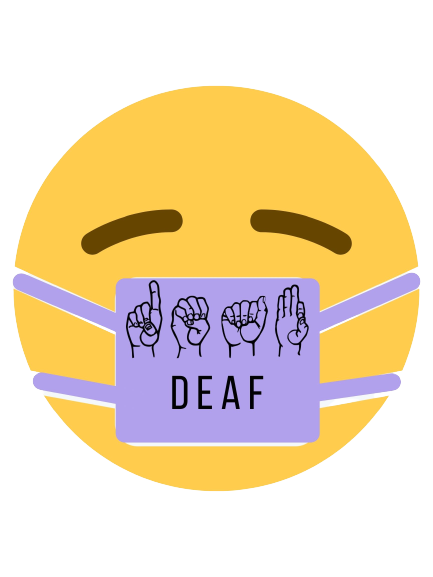OP-ED: Living Deaf in a Masked World
March 11, 2022
It has been almost two years since the COVID-19 pandemic began and schools all around the world were instructed to shift to virtual learning. My 10th, 11th, and 12th grade years have been a long journey. As one of the only deaf/hearing impaired students in the school, I can completely understand why so many people are frustrated about the pandemic going on for this long. Now imagine your frustration if you depended on reading lips and you suddenly found yourself in a world where everyone’s face was covered from the nose down! Kind of puts your frustration in perspective, doesn’t it?
During the first year and a half of the pandemic, all of my classes were held virtually, on Google Meet. The problem with Google Meet for me was that the subtitles would not always work, and I would become easily upset.
For students who are hearing impaired like me, it’s always stressful when I can’t hear in class. Usually, a hearing-impaired student uses an F.M system — a wireless device that helps people in noisy listening situations. All of my teachers wear it every day, and it connects to my hearing devices, which are a Cochlear implant and hearing aid. Because of virtual learning, it was hard for me to understand everything my teachers were saying since they didn’t have the F.M system. For example, one time my teacher said that a test was open notes, and I didn’t know so I got a lower grade on the test because I never heard the directions. Another time, I misinterpreted what my math teacher said and did the wrong problems on a homework assignment.
According to the Think Global Organization, one out of five people, experienced hearing loss in 2019. That’s the equivalent of 1.5 billion people!
“Facial masks, an essential tool used to slow the spread of COVID-19, can decrease speech recognition for some people with hearing loss,” Lydia Hale, a post-bachelor fellow at the Institute for Health Metrics and Evaluation says.
Even before the pandemic, I always relied on lip-reading and tried my best with the hearing ability I have. In a recent Hearing Health Foundation survey, a reported 85 percent of hearing impaired individuals experienced difficulty reading lips covered by face masks during the pandemic.
An article written by Lisa O’Malley in INSIGHT into Diversity Magazine includes an insightful quote from Samuel R. Atcherson, professor at the University of Arkansas and their director of audiology research. Since 2008, he has researched the effects of communicating with transparent facial masks.
“We ultimately hope that transparent masks become the norm,” he said, noting that clear masks have the potential to prevent errors in communication between health care workers and patients.
I hope that by writing this article, I have spread more awareness about what it’s like to be a hearing-impaired student. It’s important for all students to have resources to help them. Providing class notes is always useful, and using subtitles for videos played in class helps me a lot. I am also grateful to have resources like Academy, where I can ask my teachers for help with instructions that I didn’t hear in class.




